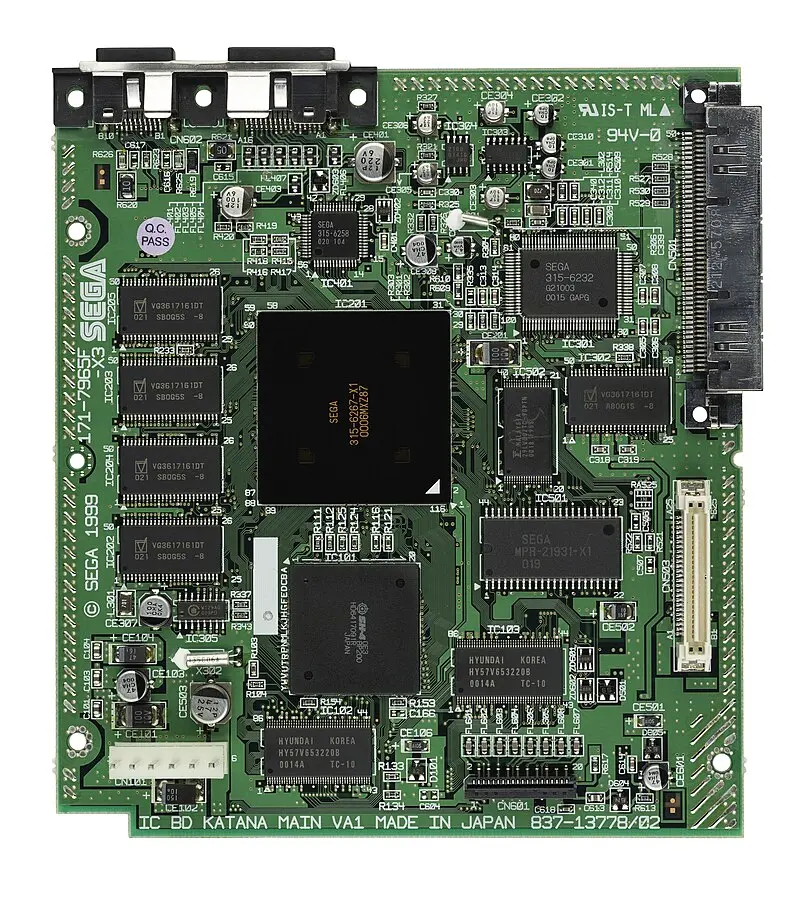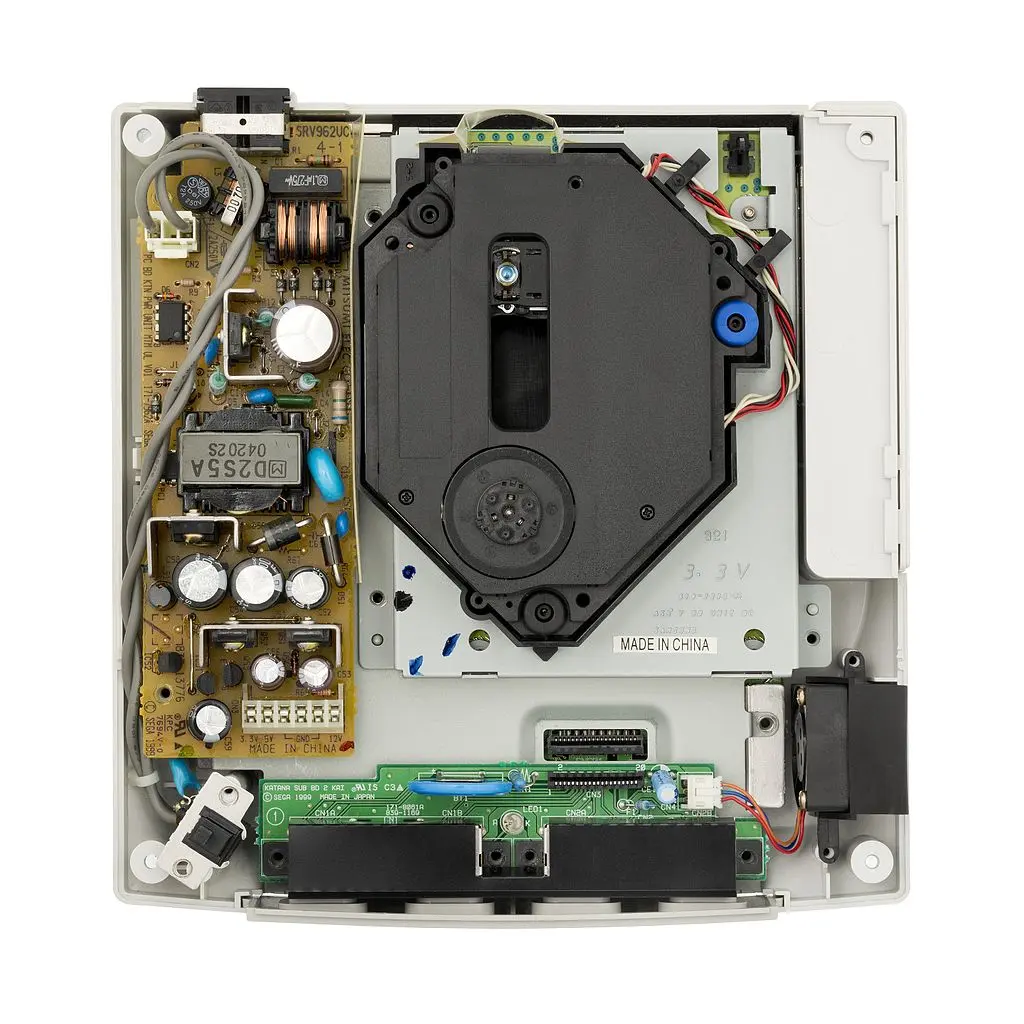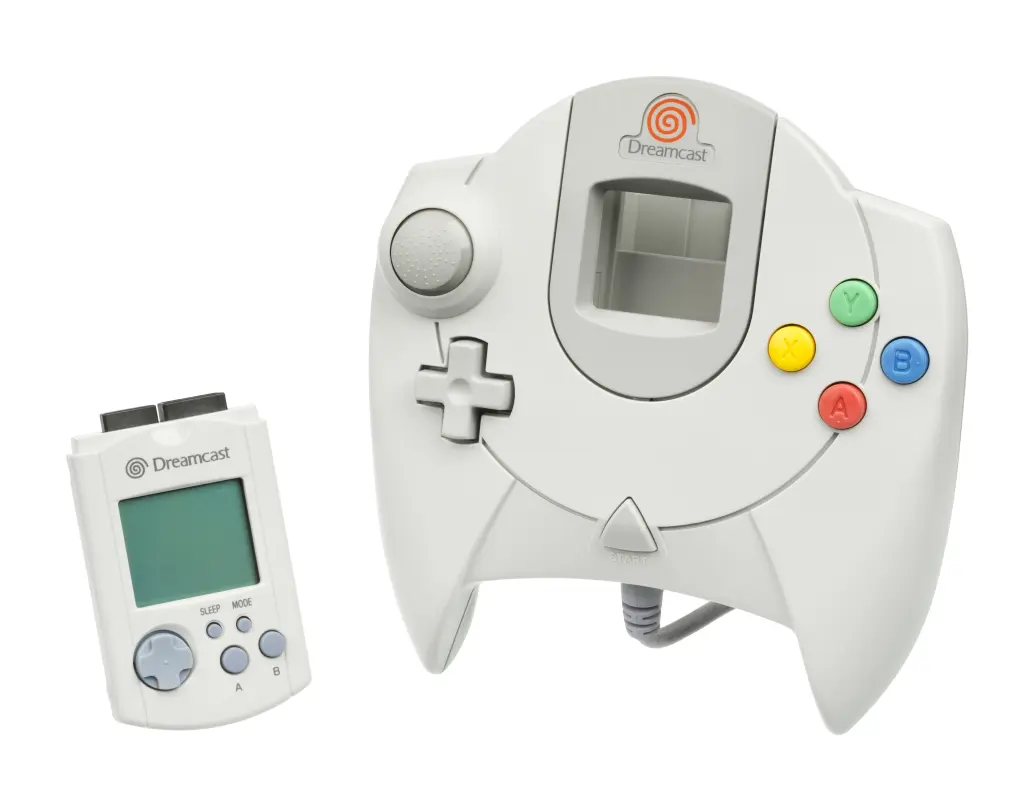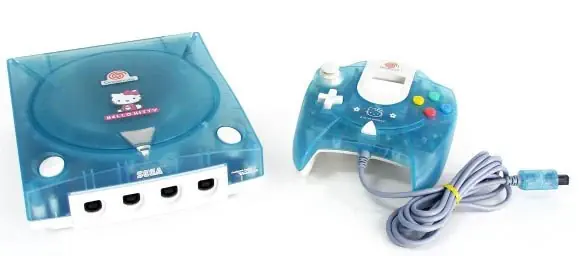Sega Dreamcast Hello Kitty
Sega constructed various exclusive Dreamcast models, most were released in Japan Only. This one is a Hello Kitty branded Dreamcast, and was limited to only 2000 units, marketed at female gamers in Japan.
The Sega Dreamcast
The Sega Dreamcast is a home video game console released by Sega on November 27, 1998, in Japan. It was released in North America and Europe a year later. The Dreamcast was the first sixth-generation video game console, preceding Sony's PlayStation 2, Nintendo's GameCube, and Microsoft's Xbox. The Dreamcast was Sega's final console; its 2001 discontinuation ended the company's eighteen years in the console market.
Technical Capabilities
Its main CPU is a two-way 360 MIPS superscalar Hitachi SH-4 32-bit RISC clocked at 200MHz with an 8 kB instruction cache, a 16 kB data cache, and a 128-bit graphics-oriented floating-point unit delivering 1.4 GFLOPS. Its 100 MHz NEC PowerVR2 rendering engine, integrated with the ASIC, can draw more than 3 million polygons per second and can use deferred shading. Sega estimated the Dreamcast's theoretical rendering capability at 7 million raw polygons per second, or 6 million with textures and lighting, but noted that "game logic and physics reduce peak graphic performance".Graphical hardware effects include trilinear filtering, shading, z-buffering, spatial anti-aliasing, per-pixel translucency sorting, and bump mapping. The Dreamcast can output approximately 16.77 million colors simultaneously and displays interlaced or progressive scan video at 640 × 480 video resolution. Its 67 MHz Yamaha AICA sound processor, with a 32-bit ARM7 RISC CPU core, can generate 64 voices with PCM or ADPCM, providing ten times the performance of the Saturn's sound system. The Dreamcast has 16 MB main RAM, along with an additional 8 MB of RAM for graphic textures and 2 MB of RAM for sound. It reads media using a 12× speed Yamaha GD-ROM drive.
The Dreamcast came with A/V cables, at the time the standard for video and audio connectivity. Sega and various third parties also manufactured RF modulator connectors and S-Video cables. A VGA adapter allows Dreamcast to connect to a computer monitor.
Dreamcast Motherboard

Dreamcast Optical Drive Assembly

Dreamcast Controller
The Dreamcast controller has two dock connectors for use with multiple accessories, like the VMU

VRAM: 8MB
2MB Audio RAM Sound Chip 32-bit ARM7 RISC Sound 67 MHz Yamaha AICA with 32-bit ARM7 RISC CPU core, 64 channels Display Chip 100 MHz NEC PowerVR2, integrated with ASIC Display 640x480 in 16.77M Colors Best Color 16.77M Best Graphics 640x480 Sprites n/a Storage ROM Cartridges

